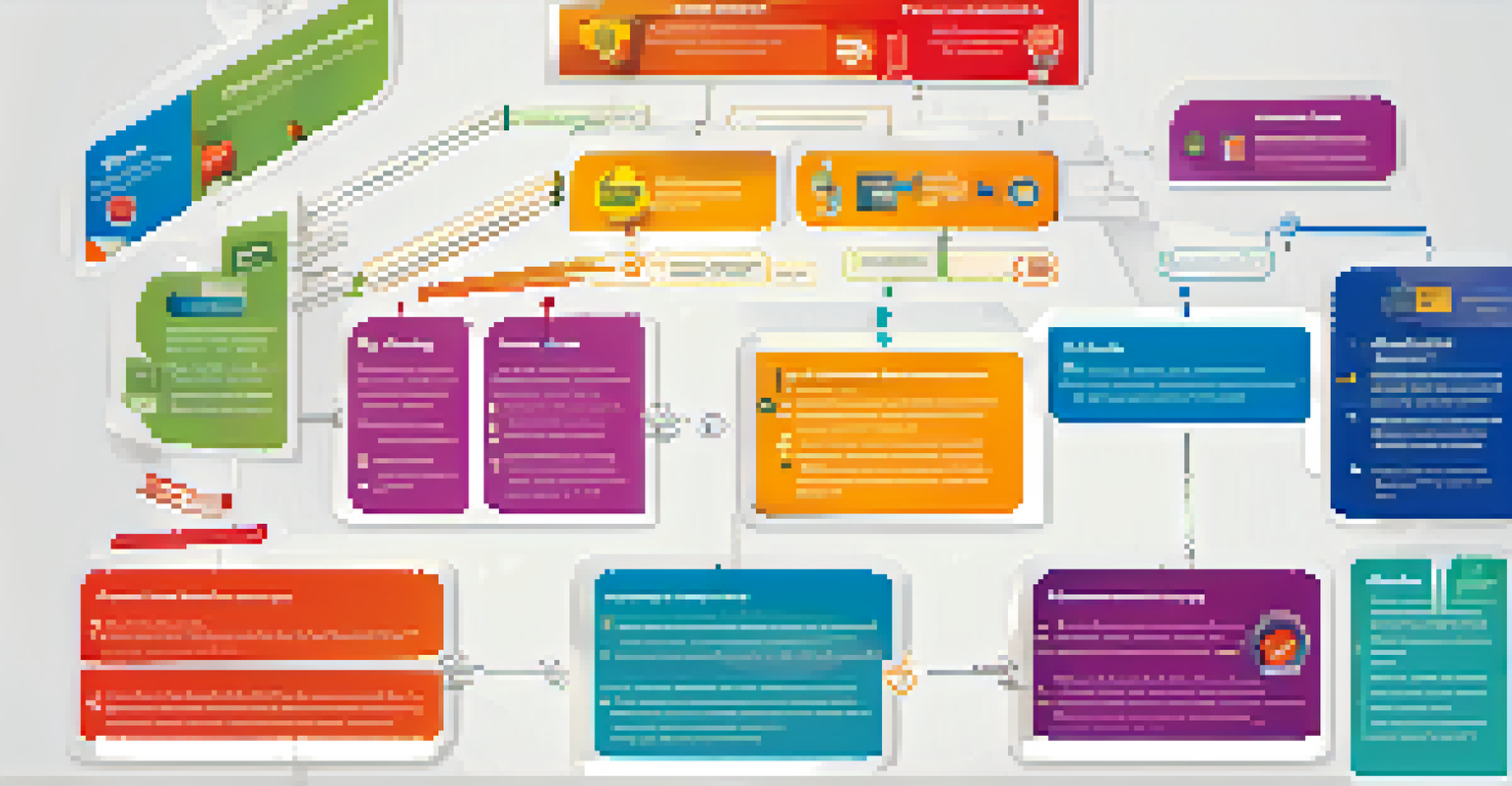Open Badges for Nonprofits: Recognizing Volunteer Skills

Understanding Open Badges and Their Importance
Open badges are digital credentials that signify a person's achievements, skills, or experiences. They are often used in educational and professional settings, but their potential in the nonprofit sector is just beginning to be explored. By providing a way to recognize volunteer skills, open badges can help nonprofits showcase the impact of their volunteers in a tangible way.
Recognition is not a scarce resource. You can’t use it up or run out of it. The more you give, the more you have.
For many volunteers, the experience gained through their service is invaluable, yet it often goes unrecognized. Open badges serve as a solution to this problem, allowing organizations to validate and celebrate the contributions of their volunteers. This recognition not only boosts volunteer morale but also enhances their employability by adding to their resumes.
In a world that increasingly values skills over traditional qualifications, open badges can bridge the gap between volunteer experience and professional recognition. They empower volunteers by giving them something concrete to showcase their dedication, making a meaningful difference in their personal and professional lives.
How Open Badges Work in Nonprofit Settings
Open badges are created and issued by organizations through platforms that support badge standards. Nonprofits can design badges that reflect specific skills or achievements relevant to their missions. For example, a badge could signify that a volunteer has completed a training program or has contributed a certain number of hours to a project.

Once a badge is earned, it can be displayed on social media profiles, resumes, or digital portfolios. This visibility not only highlights the volunteer's skills but also promotes the nonprofit's mission and activities. It's a win-win: volunteers gain recognition, while nonprofits benefit from increased visibility and potential recruitment.
Open Badges Recognize Volunteer Skills
Open badges serve as digital credentials that validate and celebrate the contributions of volunteers, boosting their morale and employability.
Moreover, open badges can be a part of a larger strategy to engage and retain volunteers. By recognizing and showcasing their contributions, nonprofits can create a culture of appreciation that encourages volunteers to remain active and involved.
Benefits of Open Badges for Volunteers
One of the main advantages of open badges is that they provide a sense of accomplishment to volunteers. Earning a badge can feel like a milestone, validating the effort and time spent on various projects. This boost in confidence can lead to further engagement and commitment to the nonprofit’s cause.
Badges are a way to recognize learning that happens everywhere, not just in formal education.
Additionally, open badges help volunteers communicate their skills to potential employers or educational institutions. In today's competitive landscape, having verifiable credentials can set individuals apart from others who may not have the same experience. It gives volunteers a way to prove their capabilities beyond just a traditional CV.
Open badges also foster a sense of community among volunteers. As they earn and display badges, it creates opportunities for shared experiences and recognition within the nonprofit. This sense of belonging can be incredibly motivating, encouraging volunteers to collaborate and support one another.
Creating Effective Badge Designs
When designing open badges, it's crucial to ensure they are visually appealing and meaningful. Each badge should represent a specific skill or achievement and be designed in a way that resonates with the organization's mission. For instance, a badge for 'Community Engagement' might incorporate symbols or colors that reflect the nonprofit's brand.
Clear criteria for earning each badge should also be established. Volunteers need to understand what is required to receive a badge and how it reflects their contributions. This transparency not only builds trust but also encourages volunteers to strive for additional badges as they progress.
Badges Enhance Nonprofit Visibility
By displaying earned badges on social media and resumes, volunteers promote their skills while also increasing the visibility of the nonprofit's mission.
Finally, consider how badges will be shared and celebrated within the organization. Creating a system for issuing and displaying badges can enhance their value, turning them into a point of pride for volunteers and the organization alike.
Implementing an Open Badge System
To effectively implement an open badge system, nonprofits should begin by assessing their needs and goals. What skills do they want to recognize? What achievements are most relevant to their mission? Understanding these elements will guide the development of a tailored badge program.
Next, choose a platform that supports the creation and management of open badges. There are various digital badge platforms available, each offering unique features. It’s essential to select one that aligns with the organization’s technical capabilities and user needs.
Lastly, engage volunteers in the process. By involving them in discussions about what badges should represent, nonprofits can ensure that the system is meaningful and relevant to those it aims to serve. This collaborative approach fosters ownership and enthusiasm for the badge program.
Promoting Open Badges to Volunteers
Once the badge system is in place, promoting it effectively is vital for engagement. Nonprofits should communicate the benefits of earning badges to their volunteers through newsletters, social media, and meetings. Highlighting success stories of individuals who have leveraged badges can inspire others to participate.
Providing guidance on how to share badges on social media platforms can also encourage volunteers to showcase their achievements. When volunteers share their badges publicly, it not only boosts their visibility but also enhances the nonprofit's reputation.
Creating a Culture of Recognition
Implementing an open badge system fosters a sense of community and appreciation, encouraging volunteers to stay engaged and committed to the nonprofit's cause.
Regularly celebrating the achievements of badge earners through events or online recognition can further promote the program. This not only acknowledges the hard work of volunteers but also creates excitement around the badge system, encouraging more individuals to get involved.
The Future of Open Badges in the Nonprofit Sector
As the nonprofit sector continues to evolve, the use of open badges is likely to expand significantly. These digital credentials offer a modern solution to recognizing volunteer contributions, especially as more organizations embrace digital transformation. The potential for badges to facilitate partnerships and collaboration between nonprofits is also promising.
Moreover, as more educational institutions and employers recognize open badges, their value will only increase. Nonprofits that adopt this system early on can position themselves as leaders in volunteer recognition, attracting more volunteers who are eager to gain these credentials.

In conclusion, open badges represent a powerful tool for nonprofits to acknowledge and validate the skills of their volunteers. By embracing this innovative approach, organizations can create a culture of recognition that benefits everyone involved.